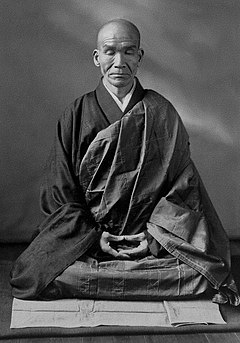 | |
| Author | James H. Austin |
|---|---|
| Country | United States |
| Language | English |
| Subject | Neuroscience, Zen |
| Publisher | MIT Press |
Publication date | 6 February 1998 |
| Media type | Print (trade paperback) |
| Pages | 844 |
| ISBN | 978-0-262-01164-8 |
| OCLC | 37187487 |
| 294.3/422 | |
| LC Class | BQ9288.A96 |
| Followed by | Chase, Chance, and Creativity: The Lucky Art of Novelty |
Zen and the Brain: Toward an Understanding of Meditation and Consciousness is a 1998 book by neurologist and Zen practitioner James H. Austin, in which the author attempts to establish links between the neurological workings of the human brain and meditation. The eventual goal would be to establish mechanisms by which meditation induces changes in the activity of the brain, which in turn induces a state of mental clarity. For example, Austin presents evidence from EEG scans that deep relaxed breathing reduces brain activity.

James H. Austin is an American neurologist and author. He is the author of the book Zen and the Brain. It establishes links between the neurophysiology of the human brain and the practice of meditation, and won the Scientific and Medical Network Book Prize for 1998. He has written five sequels: Zen-Brain Reflections (2006), Selfless Insight (2009), Meditating Selflessly (2011), Zen-Brain Horizons (2014) and Living Zen Remindfully (2016).

Neurology is a branch of medicine dealing with disorders of the nervous system. Neurology deals with the diagnosis and treatment of all categories of conditions and disease involving the central and peripheral nervous systems, including their coverings, blood vessels, and all effector tissue, such as muscle. Neurological practice relies heavily on the field of neuroscience, the scientific study of the nervous system.

Humans are the only extant members of the subtribe Hominina. Together with chimpanzees, gorillas, and orangutans, they are part of the family Hominidae. A terrestrial animal, humans are characterized by their erect posture and bipedal locomotion; high manual dexterity and heavy tool use compared to other animals; open-ended and complex language use compared to other animal communications; larger, more complex brains than other animals; and highly advanced and organized societies.
Contents
The publishers described their book as a "Comprehensive text on the evidence from neuroscience that helps to clarify which brain mechanisms underlie the subjective states of Zen, and employs Zen to 'illuminate' how the brain works in various states of consciousness". Austin starts with a discussion of Zen Buddhism, its goals, and practices. Having laid this groundwork, he then turns to explore the neurological basis of consciousness.

Neuroscience is the scientific study of the nervous system. It is a multidisciplinary branch of biology that combines physiology, anatomy, molecular biology, developmental biology, cytology, mathematical modeling and psychology to understand the fundamental and emergent properties of neurons and neural circuits. The understanding of the biological basis of learning, memory, behavior, perception, and consciousness has been described by Eric Kandel as the "ultimate challenge" of the biological sciences.

Zen is a school of Mahayana Buddhism that originated in China during the Tang dynasty, then known as the Chan School and later developed into various schools. It was strongly influenced by Taoist philosophy, especially Neo-Daoist thought, and developed as a distinct school of Chinese Buddhism. From China, Chán spread south to Vietnam and became Vietnamese Thiền, northeast to Korea to become Seon Buddhism, and east to Japan, becoming Japanese Zen.

Consciousness at its simplest refers to “sentience or awareness of internal or external existence”. Despite centuries of analyses, definitions, explanations and debates by philosophers and scientists, consciousness remains puzzling and controversial, being “at once the most familiar and most mysterious aspect of our lives". Perhaps the only widely agreed notion about the topic is the intuition that it exists. Opinions differ about what exactly needs to be studied and explained as consciousness. Sometimes it is synonymous with 'the mind', other times just an aspect of mind. In the past it was one’s “inner life”, the world of introspection, of private thought, imagination and volition. Today, with modern research into the brain it also includes any kind of experience, cognition, feeling or perception. It may be ‘awareness’, or 'awareness of awareness’, or both. Questions include whether consciousness is one kind with different features or whether there are different kinds of consciousness, or whether only humans are conscious or all animals or even the whole universe. The disparate range of research, notions and speculations raises doubts about the sensibility of the questions being asked.
Austin wrote a follow-up, Zen-Brain Reflections.








